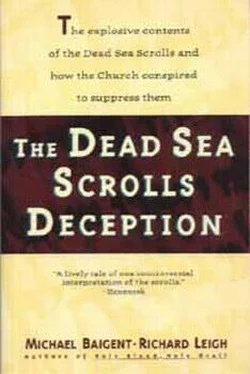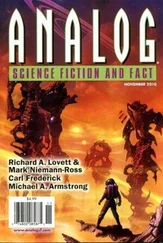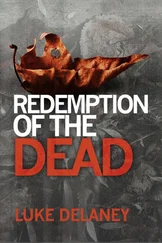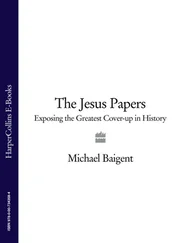10. Science in the Service of Faith
According to the consensus of the international team, the historical events reflected in all the relevant Dead Sea Scrolls occurred in Maccabean times — between the mid-2nd and mid-1 st centuries bc. The ‘Wicked Priest’, who pursues, persecutes and perhaps kills the ‘Teacher of Righteousness’, is generally identified by them as Jonathan Maccabaeus, or perhaps his brother Simon, both of whom enjoyed positions of prominence during that epoch; and the invasion of a foreign army is taken to be that launched by the Romans under Pompey in 63 bc. 1The historical backdrop of the scrolls is thus set safely back in pre-Christian times, where it becomes disarmed of any possible challenge to New Testament teaching and tradition.
But while some of the Dead Sea Scrolls undoubtedly do refer to pre-Christian times, it is a grievous mistake — for some, perhaps, deliberate obfuscation — to conclude that all of them do so. Pompey, who invaded the Holy Land in 63 bc, was, of course, a contemporary of Julius Caesar. At the time of Pompey and Caesar, Rome was still a republic, becoming an empire only in 27 bc, under Caesar’s adoptive son, Octavian, who took the imperial title of Augustus. If the Roman invasion referred to in the scrolls was that of Pompey, it would have involved the armies of republican Rome. Yet the ‘War Rule’ speaks of a ‘king’ or ‘monarch’ of the invaders. And the ‘Habakkuk Commentary’ is even more explicit in its reference to victorious invaders sacrificing to their standards. It would therefore seem clear that the invasion in question was that of imperial Rome — the invasion provoked by the revolt of ad 66.
Professor Godfrey Driver of Oxford found numerous textual references within the scrolls that provide clues to their dating. Focusing in particular on the ‘Habakkuk Commentary’, he concluded that the invaders could only be ‘the Roman legions at the time of the revolt in ad 66’. This conclusion, he added, ‘is put beyond doubt by the reference to their sacrificing to their military standards’. 2His statements, however, elicited a vicious attack from Father de Vaux, who recognised that they led inexorably to the conclusion that ‘the historical background of the scrolls therefore is the war against Rome’. 3This, of course, de Vaux could not possibly accept. At the same time, however, he could not refute such precise evidence. In consequence, he contrived to dismiss the evidence and attack only Driver’s general thesis: ‘Driver has started from the pre-conceived idea that all scrolls were post-Christian, and that this idea was based on the fallacious witness of orthography, language and vocabulary.’ 4It was, he declared, for professional historians ‘to decide whether [Driver’s] motley history… has sufficient foundation in the texts’. 5It is interesting that de Vaux, who taught biblical history at the Ecole Biblique, should suddenly (at least when he had to answer Professor Driver) don a cloak of false modesty and shrink from considering himself an historian, taking refuge instead behind the supposed bulwarks of archaeology and palaeography. 6In fact, archaeological data reinforce the indications of chronology provided by the internal data of the scrolls themselves. External evidence concurs with internal evidence — evidence of which the consensus would seem to remain oblivious. At times, this has led to an embarrassing faux pas.
De Vaux, it will be remembered, embarked on a preliminary excavation of the Qumran ruins in 1951. His findings were sufficiently consequential to justify a more ambitious enterprise. A characteristic lassitude set in, however, and no full-scale excavation was undertaken until 1953. Annual excavations then continued until 1956; and in 1958, an associated site at Ein Feshka, less than a mile to the south, was also excavated. In his eagerness to distance the Qumran community from any connection with early Christianity, de Vaux rushed his conclusions about dating into print. In some instances, he did not even wait for archaeological evidence to support him. As early as 1954, the Jesuit professor Robert North noted no fewer than four cases in which de Vaux had been forced to retract on his dating. North also found it distressing that, even on so crucial a matter, no specialists ‘independently of de Vaux’s influence’ were asked to contribute their conclusions. 7But it was not de Vaux’s style to invite opinions that might conflict with his own and shed a more controversial light on the material. Nor was he eager to announce his errors when they occurred. Although quick to publish and publicise conclusions that confirmed his thesis, he was markedly more dilatory in retracting them when they proved erroneous.
One important element for de Vaux was a thick layer of ash found to be blanketing the surroundings of the ruins. This layer of ash patently attested to a fire of some sort, which had obviously caused considerable destruction. Indeed, it had led to Qumran’s being partially, if not wholly, abandoned for some years. A study of the coins found at the site revealed that the fire had occurred at some time towards the beginning of the reign of Herod the Great, who occupied the throne from 37 bc until 4 BC. The same data indicated that rebuilding had commenced under the regime of Herod’s son, Archelaus, who ruled (not as king, but as ethnarch) from 4 BC until AD 6.
According to de Vaux’s thesis, the Qumran community consisted of supposedly placid, peace-loving and ascetic ‘Essenes’, on good terms with Herod as with everyone else. If this were the case, the fire which destroyed the community should have resulted not from any deliberate human intention — from an act of war, for example — but from an accident, or a natural disaster. Fortunately for de Vaux, a large crack was found running through a cistern. Although independent researchers found no indication that the crack extended any further, de Vaux claimed to have traced it through the whole of the ruins, the whole of the Qumran community. 8Even if it did, a number of experts concluded, it could probably be ascribed to erosion. 9For de Vaux, however, the crack, such as it was, seemed the result of one of the many earthquakes the region has suffered over the centuries. Instead of trying to identify the cause of the crack, in other words, de Vaux went rummaging for an earthquake that might have been responsible. As it happened, there was a more or less convenient earthquake on record. Josephus speaks of one that occurred towards the beginning of Herod’s reign, in 31 Be. This, de Vaux concluded, had caused the fire which led to the abandoning of the community. He did not bother to explain why rebuilding did not commence for a quarter of a century before, suddenly, proceeding with noticeable rapidity.
Robert Eisenman points to the strikingly precise timing of the delay in rebuilding. It coincides perfectly with Herod’s reign. No sooner had he died than reconstruction promptly began — and part of this reconstruction consisted of strengthening the defensive towers, as well as creating a rampart. It would thus seem clear, for some reason which de Vaux chose to ignore, that no one dared to rebuild Qumran while Herod remained on the throne. But why should that be the case if the community were on as congenial a footing with Herod as de Vaux maintained, and if the destruction of the community resulted from an earthquake? It would appear much more likely that the community was destroyed deliberately, on Herod’s orders, and that no reconstruction could begin until after his death. But why should Herod order the destruction of a community so placid, so universally loved, so divorced from political activity?
Whether wilfully or through negligence, de Vaux remained oblivious of such questions. Eventually, however, the logic he mustered to support his hypothetical earthquake became too strained even for the closest of his supporters, the then Father Milik. In 1957, Milik wrote of the fire and the alleged earthquake that:
Читать дальше












